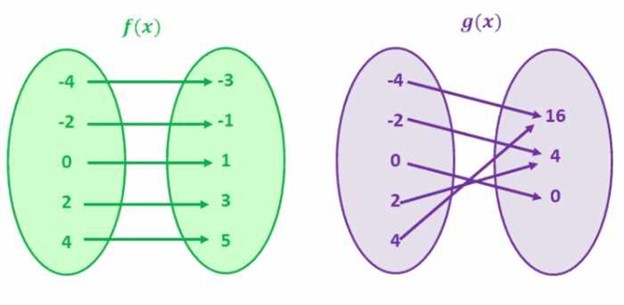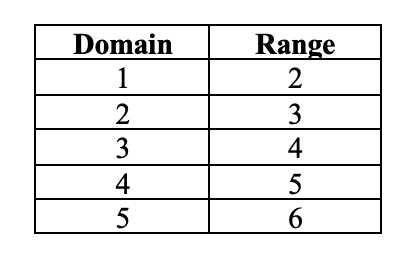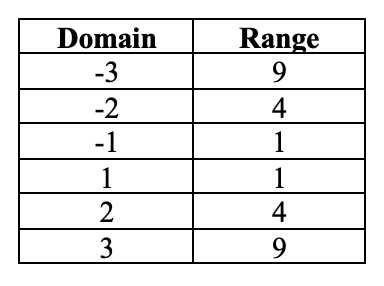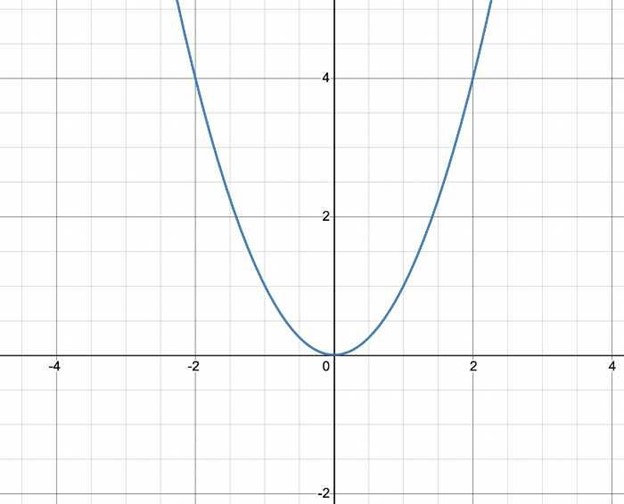One to One Functions - Graph, Examples | Horizontal Line Test
What is a One to One Function?
A one-to-one function is a mathematical function in which each input corresponds to a single output. In other words, for each x, there is only one y and vice versa. This implies that the graph of a one-to-one function will never intersect.
The input value in a one-to-one function is noted as the domain of the function, and the output value is known as the range of the function.
Let's examine the images below:

For f(x), each value in the left circle corresponds to a unique value in the right circle. Similarly, each value on the right corresponds to a unique value on the left. In mathematical words, this signifies every domain has a unique range, and every range owns a unique domain. Therefore, this is an example of a one-to-one function.
Here are some additional examples of one-to-one functions:
-
f(x) = x + 1
-
f(x) = 2x
Now let's examine the second picture, which exhibits the values for g(x).
Notice that the inputs in the left circle (domain) do not have unique outputs in the right circle (range). Case in point, the inputs -2 and 2 have equal output, i.e., 4. Similarly, the inputs -4 and 4 have equal output, i.e., 16. We can see that there are matching Y values for numerous X values. Therefore, this is not a one-to-one function.
Here are some other representations of non one-to-one functions:
-
f(x) = x^2
-
f(x)=(x+2)^2
What are the characteristics of One to One Functions?
One-to-one functions have the following properties:
-
The function has an inverse.
-
The graph of the function is a line that does not intersect itself.
-
The function passes the horizontal line test.
-
The graph of a function and its inverse are the same with respect to the line y = x.
How to Graph a One to One Function
In order to graph a one-to-one function, you will have to determine the domain and range for the function. Let's look at an easy representation of a function f(x) = x + 1.

Immediately after you know the domain and the range for the function, you have to graph the domain values on the X-axis and range values on the Y-axis.
How can you tell whether a Function is One to One?
To prove whether or not a function is one-to-one, we can apply the horizontal line test. Immediately after you plot the graph of a function, trace horizontal lines over the graph. In the event that a horizontal line intersects the graph of the function at more than one spot, then the function is not one-to-one.
Because the graph of every linear function is a straight line, and a horizontal line doesn’t intersect the graph at more than one place, we can also conclude all linear functions are one-to-one functions. Don’t forget that we do not use the vertical line test for one-to-one functions.
Let's look at the graph for f(x) = x + 1. As soon as you chart the values of x-coordinates and y-coordinates, you ought to examine whether or not a horizontal line intersects the graph at more than one place. In this instance, the graph does not intersect any horizontal line more than once. This means that the function is a one-to-one function.

On the other hand, if the function is not a one-to-one function, it will intersect the same horizontal line more than one time. Let's examine the graph for the f(y) = y^2. Here are the domain and the range values for the function:

Here is the graph for the function:

In this example, the graph intersects multiple horizontal lines. Case in point, for each domains -1 and 1, the range is 1. In the same manner, for each -2 and 2, the range is 4. This implies that f(x) = x^2 is not a one-to-one function.
What is the inverse of a One-to-One Function?
Considering the fact that a one-to-one function has only one input value for each output value, the inverse of a one-to-one function also happens to be a one-to-one function. The opposite of the function basically reverses the function.
Case in point, in the event of f(x) = x + 1, we add 1 to each value of x as a means of getting the output, in other words, y. The inverse of this function will remove 1 from each value of y.
The inverse of the function is f−1.
What are the properties of the inverse of a One to One Function?
The characteristics of an inverse one-to-one function are the same as any other one-to-one functions. This implies that the inverse of a one-to-one function will hold one domain for each range and pass the horizontal line test.
How do you determine the inverse of a One-to-One Function?
Figuring out the inverse of a function is not difficult. You just need to change the x and y values. For instance, the inverse of the function f(x) = x + 5 is f-1(x) = x - 5.

Just like we learned before, the inverse of a one-to-one function reverses the function. Considering the original output value required adding 5 to each input value, the new output value will require us to subtract 5 from each input value.
One to One Function Practice Examples
Examine these functions:
-
f(x) = x + 1
-
f(x) = 2x
-
f(x) = x2
-
f(x) = 3x - 2
-
f(x) = |x|
-
g(x) = 2x + 1
-
h(x) = x/2 - 1
-
j(x) = √x
-
k(x) = (x + 2)/(x - 2)
-
l(x) = 3√x
-
m(x) = 5 - x
For any of these functions:
1. Figure out if the function is one-to-one.
2. Plot the function and its inverse.
3. Figure out the inverse of the function mathematically.
4. State the domain and range of each function and its inverse.
5. Employ the inverse to solve for x in each calculation.
Grade Potential Can Help You Master You Functions
If you are having problems using one-to-one functions or similar topics, Grade Potential can set you up with a one on one teacher who can assist you. Our San Gabriel math tutors are skilled educators who help students just like you advance their skills of these types of functions.
With Grade Potential, you can work at your individual pace from the comfort of your own home. Book a call with Grade Potential today by calling (626) 888-8501 to get informed about our educational services. One of our team members will call you to better determine your needs to set you up with the best teacher for you!




